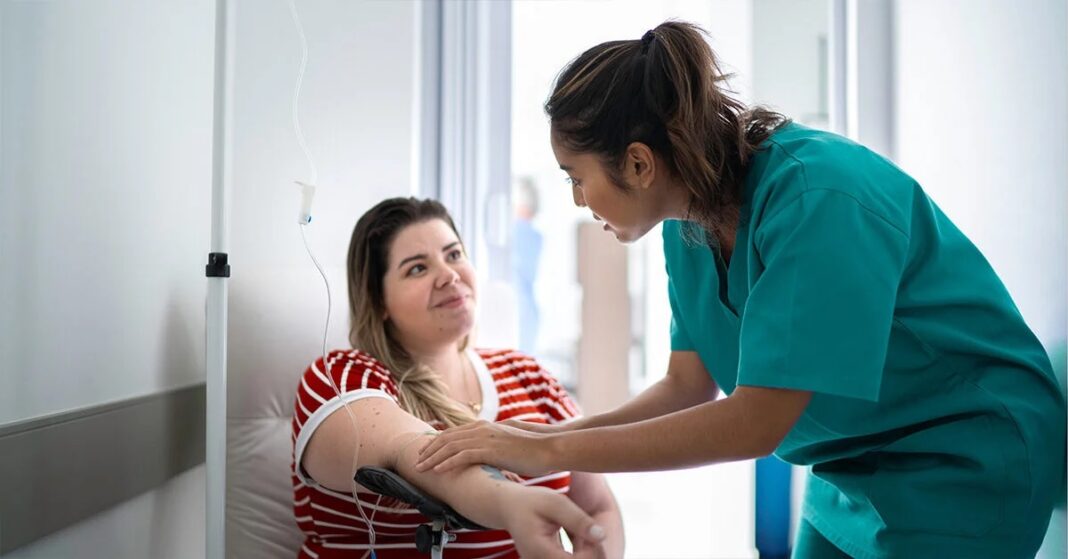Home infusion therapy has become increasingly popular in recent years due to its convenience and cost-effectiveness. For many patients with chronic illnesses or conditions requiring ongoing IV therapy, the ability to receive treatment in the comfort of their own homes has been a game-changer. Administering the IV drip at home is more convenient for patients, frees hospital resources, and allows healthcare providers to treat more patients. However, it is essential to note that home infusion therapy requires proper training, equipment, and adherence to safety protocols to ensure a successful treatment outcome. This article will provide tips for ensuring a safe and effective home infusion treatment, including consultation with a healthcare professional, practising proper hand hygiene and sterile technique, monitoring your treatment closely, and seeking help if needed.
- Consult With a Healthcare Professional
- Before beginning any home infusion treatment, it is important to consult with a healthcare professional. Your doctor or pharmacist can help you understand the benefits and risks of your treatment, as well as provide you with guidance on proper administration and monitoring.
- In addition, your healthcare provider can help you select the right equipment and supplies, such as IV catheters, infusion pumps, and sterile dressings, to ensure that your treatment is safe and effective.
- Practice Proper Hand Hygiene
- Proper hand hygiene is critical when administering home infusion therapy. Before touching any equipment or supplies, be sure to wash your hands thoroughly with soap and water for at least 20 seconds or use a hand sanitiser that contains at least 60% alcohol.
- It is also important to clean and disinfect any surfaces that will come into contact with your treatment, such as your work surface, infusion pump, and IV catheter.
- Use Sterile Technique
- A sterile technique is essential when administering home infusion therapy. Be sure to follow all instructions for preparing and handling your equipment and supplies, such as using sterile gloves and avoiding touching the tips of syringes or IV catheters.
- In addition, it is important to maintain a sterile environment during your treatment. This means working in a clean, well-lit area and avoiding any unnecessary movements or disruptions.
- Monitor Your Treatment Closely
- Home infusion therapy requires careful monitoring to ensure that your treatment is safe and effective. Be sure to keep a detailed record of your treatment, including the date, time, dosage, and any side effects or adverse reactions.
- In addition, monitor your vital signs, such as your heart rate, blood pressure, and temperature, as well as any symptoms or changes in your condition. If you experience any adverse reactions, such as fever, chills, or difficulty breathing, contact your healthcare provider immediately.
- Dispose of Equipment and Supplies Properly
- Proper disposal of equipment and supplies is essential to prevent the spread of infection and ensure safety for yourself and others. Be sure to dispose of all used needles, syringes, and IV catheters in a sharps container or other approved container, and dispose of any other supplies, such as gloves or dressings, in a sealed plastic bag.
- In addition, be sure to properly clean and disinfect any equipment or surfaces that may have come into contact with your treatment.
- Seek Help If Needed
- Individually doing the therapy can sometimes be a challenging process, and it is important to seek help if you need it. With the help of professional care services, you can easily get your therapy in the comfort of your home. If you have any doubts about your treatment, feel free to contact your healthcare provider or pharmacist.
- In addition, consider joining a support group or seeking out other resources, such as online forums or educational materials, to help you manage your condition and stay informed about your treatment options.
Administering the IV drip at home can be a safe and effective alternative to hospital-based treatment, but it requires careful attention to safety and proper administration. By following these tips and working closely with your healthcare provider, you can ensure a successful and safe home infusion treatment.
